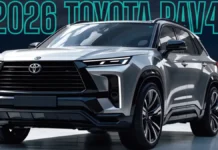The automotive industry is undergoing a remarkable transformation, driven by technological advancements and changing consumer demands. With each passing year, we move closer to a future where autonomous vehicle, electric powertrains, and connected car technologies become the norm. This article explores the Future of Automotive Technology from around the world, offering a comprehensive overview of the trends, innovations, and disruptions shaping the automotive industry in 2024 and beyond.
Embracing the Future of Automotive Technology
The automotive industry has always been a hotbed of innovation, with manufacturers constantly striving to develop safer, more efficient, and technologically advanced vehicles. However, the pace of change is accelerating, and the future of the automotive industry is set to be defined by a host of disruptive trends. In this article, we delve into the latest advancements and explore what the future holds for cars, focusing on the technologies that will shape the driving experience in the years to come.

From self-driving cars that promise increased safety and convenience to the rise of electric vehicles offering environmentally friendly alternatives, the automotive landscape is undergoing a profound transformation. Additionally, the integration of intelligent connectivity and the Internet of Things (IoT) is enhancing in-car experiences and opening up new possibilities for data-driven services. As we look towards the future, it is clear that the cars of tomorrow will be smarter, more efficient, and increasingly autonomous.
Latest and Future Car Tech Trends:
Self-Driving Cars: The Road to Autonomy
One of the most significant trends in automotive technology is the development of self-driving cars. While fully autonomous vehicles are not yet widely available, many manufacturers are actively working on advancing this technology. Tesla, a pioneer in this field, continues to improve its Autopilot system, which already offers advanced driver-assistance features such as lane keeping, adaptive cruise control, and automatic parking.
Other automakers, including Ford, GM, and Volkswagen, are also investing heavily in self-driving technology. For example, Ford’s BlueCruise system, available on certain models, enables hands-free driving on pre-approved highways. Similarly, GM’s Super Cruise and Volkswagen’s Travel Assist systems provide varying levels of autonomy, reducing the driver’s workload during long-distance travel.
Looking to the future, we can expect further advancements in sensor technology, machine learning, and artificial intelligence, enabling fully autonomous vehicles to become a reality. This will revolutionize transportation, providing increased mobility for those unable to drive, reducing traffic congestion, and improving road safety.
The Rise of Electric Vehicles (EVs)
Electric cars are no longer a niche market, and their popularity is growing exponentially worldwide. This shift towards electrification is being driven by environmental concerns, rising fuel costs, and improvements in battery technology. As a result, many automakers are accelerating their plans to transition to electric powertrains.

Leading the way is Tesla, which has established itself as the benchmark for electric vehicle performance and technology. Their Model S, Model 3, and upcoming Cybertruck have garnered widespread acclaim for their impressive range, rapid acceleration, and innovative features. Additionally, traditional automakers like Volkswagen, with their ID.3 and ID.4 models, and GM, with the Chevrolet Bolt and upcoming Ultium platform, are also making significant strides in the EV market.
The future of electric vehicles looks bright, with advancements in battery technology promising longer ranges and faster charging times. Solid-state batteries, for instance, are expected to offer higher energy density and faster charging capabilities, addressing two of the main concerns currently associated with EV ownership.
Intelligent All-Wheel Drive and Advanced Safety Features
All-wheel-drive (AWD) systems have long been associated with improved traction and stability, particularly in adverse weather conditions. However, the latest generation of AWD technology takes this a step further by incorporating intelligent, electronically controlled systems. These systems continuously monitor driving conditions and adjust torque distribution to individual wheels, enhancing handling and safety.
Toyota’s new Electronic Kinetic Dynamic Suspension System (e-KDSS) is a prime example of this technology. Available on select Land Cruiser models, e-KDSS uses a combination of sensors and actuators to automatically adjust the suspension stiffness and improve wheel articulation, resulting in improved stability and off-road capability.
In addition to advanced AWD systems, automakers are also focusing on enhancing overall vehicle safety. Features such as lane departure warning, automatic emergency braking, and pedestrian detection are becoming increasingly common. These technologies utilize cameras, radar, and ultrasonic sensors to monitor the vehicle’s surroundings and assist the driver in avoiding potential collisions.
Connected Cars and the Internet of Things (IoT)

The integration of connectivity in cars is another significant trend, transforming vehicles into rolling smartphones. This connectivity enables a range of features, from real-time traffic updates and navigation assistance to remote vehicle diagnostics and over-the-air software updates. GM’s OnStar system, for instance, offers a suite of connected services, including automatic crash response, roadside assistance, and remote vehicle monitoring.
The Internet of Things (IoT) is also making its way into the automotive industry, allowing vehicles to communicate with other devices and infrastructure. This enables features such as vehicle-to-vehicle (V2V) and vehicle-to-infrastructure (V2I) communication, which can improve traffic flow, enhance safety, and enable more efficient transportation management.
Additionally, the rise of connected cars opens up new possibilities for in-car infotainment and personalized services. For example, drivers can access streaming services, real-time traffic data, and even augmented reality (AR) dashboards that provide navigation assistance and vehicle diagnostics.
Disruptive Trends Transforming the Automotive Industry
Beyond the technologies already mentioned, several disruptive trends are set to shape the future of automotive technology Industry. One such trend is the rise of ride-sharing and car-sharing services, which are changing the way people think about car ownership. Services like Uber and Lyft have already disrupted traditional taxi services, and the growth of car-sharing programs further challenges the need for individual car ownership.
Another significant trend is the development of alternative propulsion systems, such as hydrogen fuel cells. While electric vehicles dominate the alternative powertrain market, hydrogen fuel cell vehicles offer certain advantages, including longer ranges and faster refueling times. Toyota, in particular, is investing heavily in this technology, with their Mirai model already on the market and plans for further expansion.
Finally, the concept of “mobility as a service” (MaaS) is gaining traction, where transportation is viewed as a service that can be accessed on-demand. This integrates various transportation options, including public transit, ride-sharing, bike-sharing, and car rentals, into a single seamless system, providing users with greater flexibility and convenience.
Driving into the Future
The automotive industry is undergoing a period of rapid transformation, driven by technological advancements and changing consumer preferences. Self-driving cars, electric powertrains, intelligent connectivity, and disruptive trends such as ride-sharing and MaaS are shaping the future of mobility. As we move forward, the cars of tomorrow will be smarter, safer, and more environmentally friendly, offering an enhanced driving experience and greater connectivity than ever before. The future of automotive technology is bright, and we can expect exciting innovations that will continue to push the boundaries of what vehicles can do.




















